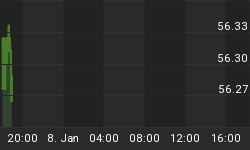As widely expected, the Bank of England (BOE) raised its policy rate by 25 basis points to 5.75%. This represents a cumulative increase of 125 basis points in a year's time. Although the European Central Bank (ECB) held its policy rate steady today at 4.00%, its president, Claude Trichet, hinted that there would be more rate increases in the not-too-distant future. My best guess is that the ECB lifts its policy rate by 25 basis points at its September meeting. In both the UK and euro-zone economies, money supply growth is high and rising (see chart below). This suggests that both the BOE and the ECB will have to continue raising their respective policy rates, perhaps into 2008, in order to curb inflationary pressures. This means that so-called global liquidity, which has funded M&A, stock buyback and private equity activity will be slowing in the quarters ahead. But the monetary tightening that will be "heard around the world" will be the one implemented by the People's Bank of China (PBOC). The PBOC has been raising reserve requirements but only gingerly letting these higher reserve requirements manifest themselves in higher overnight interest rates. With the Chinese inflation - both in terms of assets prices and goods/services prices - starting to boil, the PBOC will have to become more aggressive in raising short-term interest rates and reining in base money growth. And all of this implies letting the yuan move up against the dollar at a faster pace. When might this more aggressive PBOC policy tightening occur? A guess might be soon after the closing of the National Congress of the Communist Party scheduled for this fall.
Chart 1
The Tentacles of the Housing Recession Are Beginning to Strangle the Consumer
Light motor vehicle sales in the U.S. dropped 3.4% month-to-month in June to a seasonally adjusted rate of 15.6 million units. Excluding the Katrina-depressed sales of September 2005, the June 2007 sales rate was the slowest since September 2002. Light motor vehicle sales have declined sequentially for six consecutive months (see Chart 2). On a quarterly average basis, new light motor vehicle sales contracted at an annual rate of 12.7% in Q2 vs. a 6.2% increase in Q1. Although not all of the Q2 decrease will show up as a subtraction to consumer spending (some will subtract from business capex), there are other indications that consumer spending is flagging. As mentioned in our June 26 daily commentary, "So, the Housing Recession Is Contained?", a number of retailers in the discretionary consumer spending "space" have recently reported disappointing sales and have lowered sales guidance. Corroborating these individual retailers' reports are the Johnson Redbook retail sales survey results for June. As shown in Chart 3, both in terms of year-over-year changes and seasonally-adjusted month-to-date terms, retailing activity tailed off significantly in June. The April-May average of real personal consumption expenditures was up only 1.3% at an annual rate vs. its Q1 average. The June data on light motor vehicle sales and chain store sales are not pointing to an acceleration. The question the markets and the Fed will be wresting with over the remainder of summer is whether the sharp deceleration in Q2 real consumer spending is a one-off event or something with more longevity. My bet is the latter. The ongoing housing recession is sharply reducing one source of funding for household deficit spending - mortgage equity withdrawal (MEW). The continued decline in home prices and the tightening of mortgage underwriting standards will exacerbate the drying up of MEW. Job growth also is trending lower, which will restrain future consumer spending. Slowly but surely, the tentacles of the housing recession are strangling the consumer.
Chart 2
Chart 3
















